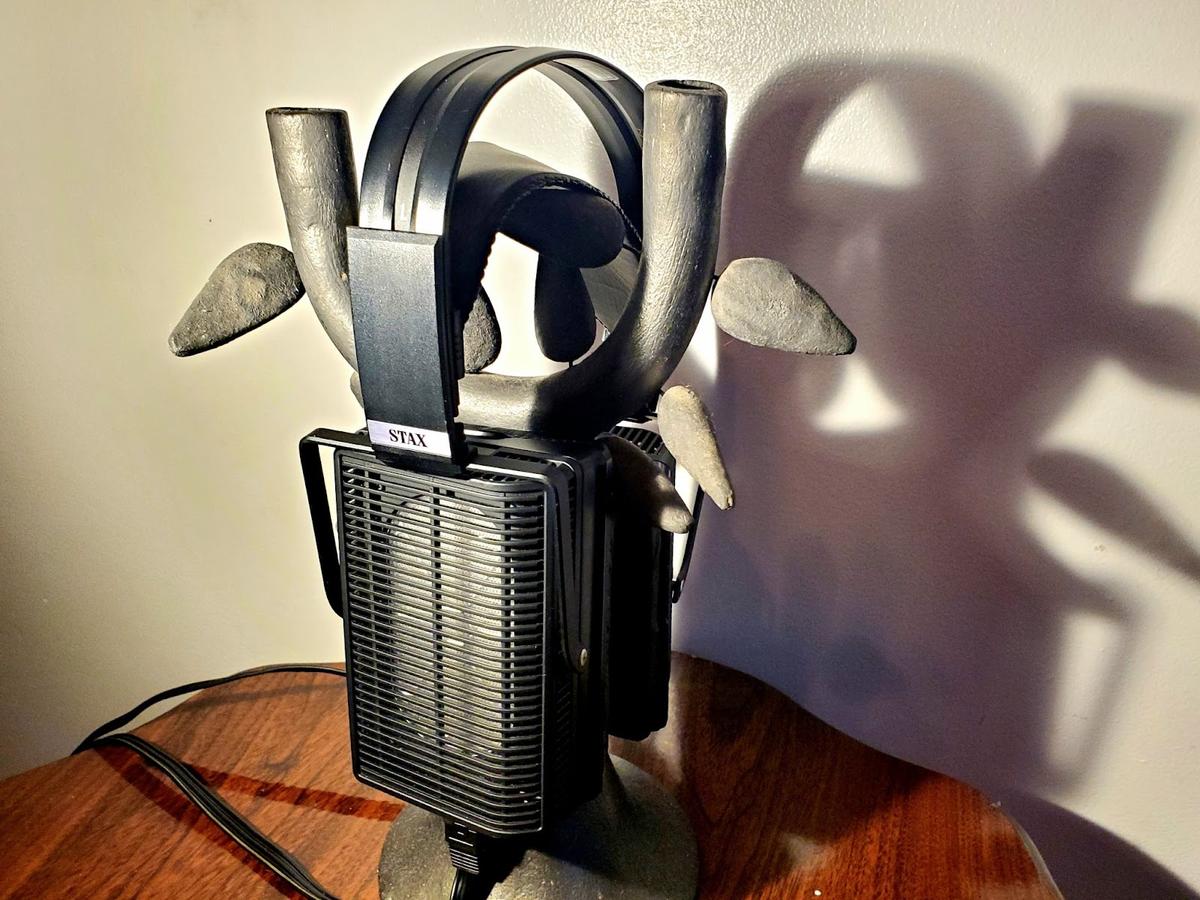The current flagship of the Stax Lambda line of headphones successfully brands itself as the ultimate Lambda.
Japanese headphone manufacturer Stax is a legend in high-end audio circles for their ultra-resolving electrostatic headphones. For many years, Stax headphones were the most resolving headphones you could buy, with very little competition regarding pure resolution.
Electrostatics are much like planar-magnetic drivers, except the lack of need for magnets allows the diaphragm to be extremely light. That, in addition to the extremely even distribution of the charge, allows for an extremely low-distortion audio driver.
Planar-magnetic and dynamic driver manufacturers have spent years cycling through materials and design choices to attain the resolving ability and low distortion that electrostatic drivers get “by default.”
- Effortless, low-distortion sound
- Cohesive tuning
- Resolution that reaches near-TOTL level
- Astonishing, best-in-class treble
- Comfortable
- Lack of tactility and dynamics in the sound
- Oddly tuned midrange
- Bass rolls off due to questionable design choice
- Unacceptable build quality for price
Stax’s longest-running series of headphones is the Lambda series. The design of these headphones is exceedingly simple: a simple rectangular driver mounted in a plastic baffle with a plastic cage around it that offers very little acoustic impedance.
I own the first two Lambda models, the original SR-Lambda and the SR-Lambda Pro. These two models offer resolution just shy of the very best that modern headphones have to offer, but they were designed in the late 1970s and early 1980s and can be found for around USD$300 (although prices are going up).
Since then, any redesigns have offered very little improved technical ability. In fact, many have taken significant steps backward. While reviewing the SR-L300, I found they lacked resolution compared to the SR-Lambda Pro.
The SR-L700, meanwhile, were billed as a new leap forward for the Lambda series. The driver design takes influence from the SR-009, particularly in their stator design, which involves braces to increase stiffness and decrease flexion, supposedly lowering distortion.
The refreshed SR-L700 MK2 is much the same but features a slightly better build and detachable cables. Supposedly, the result is the best-performing set of Lambdas in existence. And, to be honest? I can believe it. But first…
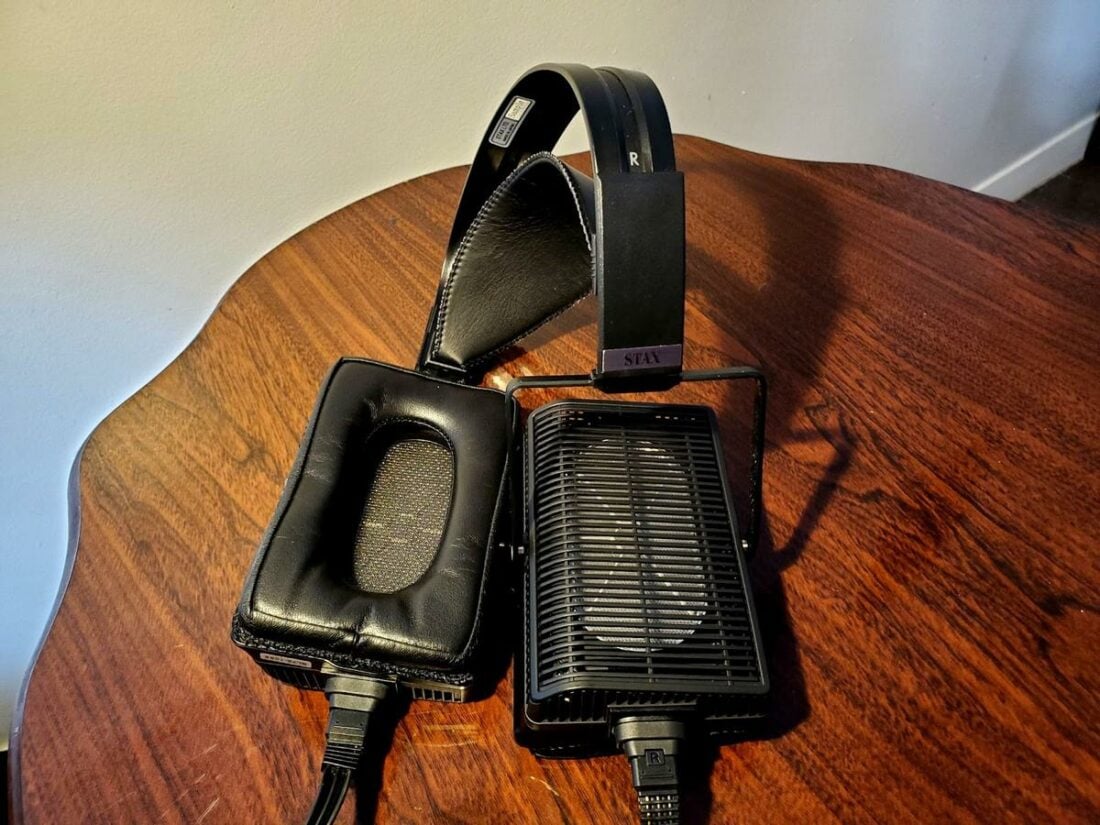
Technical Specifications
- Form: Open-back, over-ear
- Driver: Electrostatic
- Frequency Response: 7 – 41,000Hz
- Electrostatic Capacitance: 110pF (including cable)
- Impedance: 145k Ω (including cable, at 10kHz)
- Sensitivity: 101dB / 100V r.m.s. 1 kHz
- Maximum Sound Pressure: 118dB / 400Hz
- Bias Voltage: 580V DC
Build
For a pair of headphones that cost just shy of USD$1700, the build quality of the Stax SR-L700 has been rightly pilloried.
However, the plastic headband is an issue. The current headband arc is less inspiring of confidence than the old Lambda headband arc from the 80s. When I feel like the headphones are about to snap every time I put them on, it’s not a good sign.
One neat little addition to the new design is the inclusion of removable cables. I don’t see myself cable-swapping or anything like that, and it was already pretty rare for even the old Stax cables used in the 80s to fail, but some will enjoy the new removable cable. The connection feels secure as well.
I must also admit that while wearing them, I hear a fair amount of creaking and popping from various parts of the headband mechanism. That’s worrying, as well.
Comfort
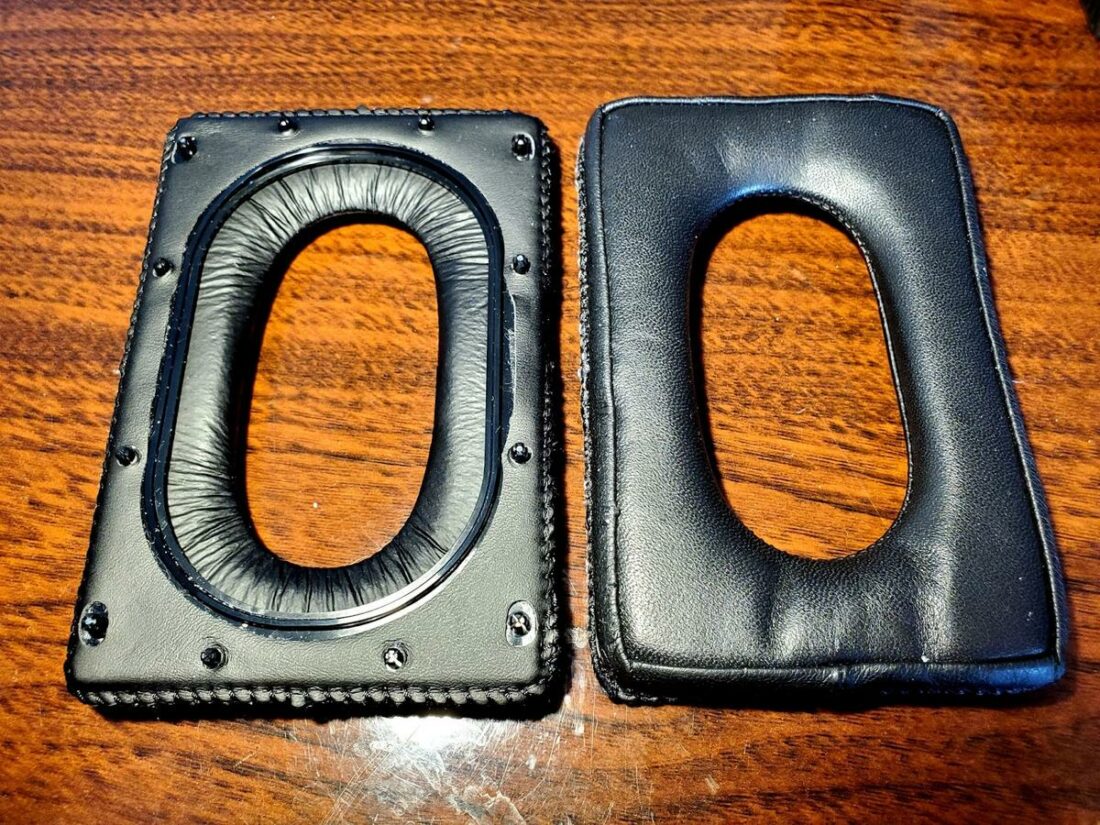
Comfort is very good, with very high-quality leather earpads. On the other hand, I do prefer the old Lambda design for comfort. The significant change with the current generation of Lambdas is that the earcups rotate inward from where they meet the yokes rather than outward as they did before.
The result is a higher clamping force (not a bad thing) and a slightly worse fit for some people. It does not negatively impact my comfort, but I’m still unsure why they did it.
Sound
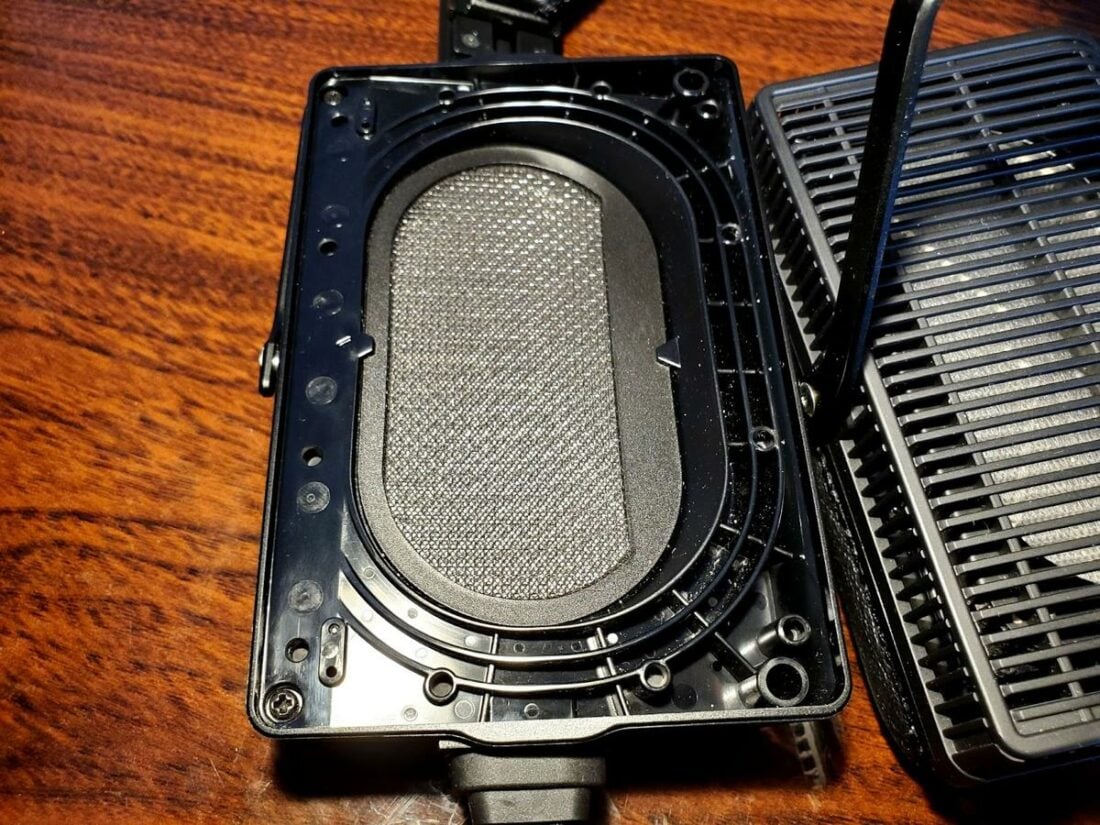
Despite many differences between the various Stax Lambda designs, a few qualities persist across models.
First is a specific midrange tuning that is always present to a greater or lesser extent. The Lambda midrange always reaches a resonance peak between 1 and 2 kHz. In older models, this peak is often spread out, starting at about 1 kHz and continuing upwards to about 1.6 kHz.
In the SR-L700, this peak is narrower and somewhat greater in amplitude. This is audible, and I’ll talk about the difference that makes in the midrange section. In addition, Lambdas usually emphasize the air frequencies (those above 10 kHz), as well as a somewhat withdrawn upper midrange and lower treble.
As they are electrostats, Lambdas have a weightless, effortless sound.
As with everything else, this is a tradeoff: on the one hand, the effect is often stunning, especially to first-time listeners, who are not used to the music they listen to being rendered with such uncanny precision.
On the other hand, these headphones don’t offer quite the same feeling of weight and tactility as a pair of dynamic headphones. Both macrodynamics and microdynamics are somewhat reduced in how these headphones present music.
Bass
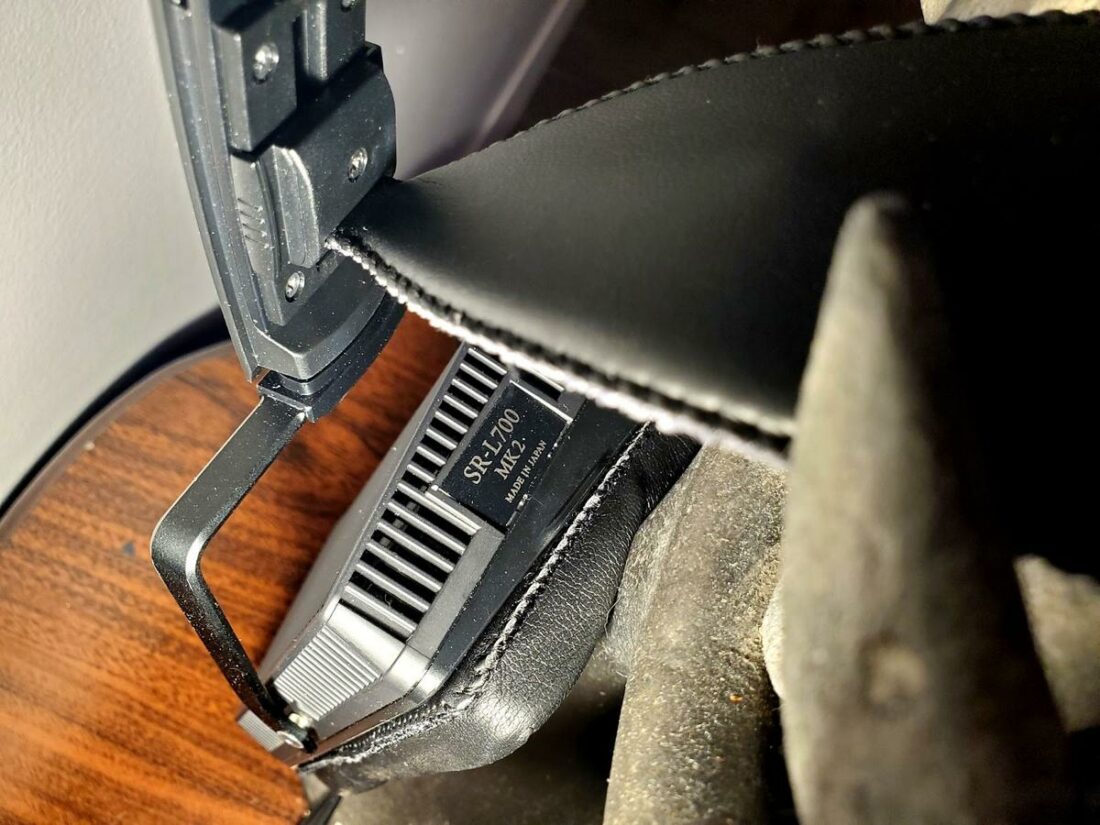
As I described in my SR-L300 review, the current generation of Lambdas have ported earpads. This creates an air gap between the head and the driver, which robs the headphones of extension (previous Lambdas had a perfect extension, with no roll-off), but adds a mid-bass peak somewhat reminiscent of those found in dynamic headphones.
The SR-L700 roll off below 50 Hz, with a midbass peak above that. This design choice certainly did not make long-time Stax fans happy when the current generation of Lambdas first came out.
In any case, bass is undoubtedly not the SR-L700s’ strong suit. Even not factoring in the extension issue, the bass is pretty soft and lacks viscerality. The light driver and lack of driver excursion mean the bass feels somewhat limp.
The result is a lack of visceral satisfaction with the SR-L700 throughout the frequency range.
The SR-L700s’ greatest weakness is that they lack a great degree of macrodynamic ability. I often find myself increasing the volume relative to other headphones to seek a greater sense of body to the sound.
Once I turn up the volume, they sound very impressive, but I concede that listening at high levels is not great for my long-term hearing, and other (non-electrostatic) headphones don’t give me the urge to do that.
Some will find the lack of visceral bass impact troublesome, while others will not be bothered by it. I am not bothered by the SR-L700s’ bass, but to insist that the bass on these headphones is just as good as any other would make me delusional.
Those who seek good bass but also want to try the Stax experience will need to step up to the SR-007, which are not so much more expensive than the SR-L700 but (some say) may require a beefier amplifier.
Midrange
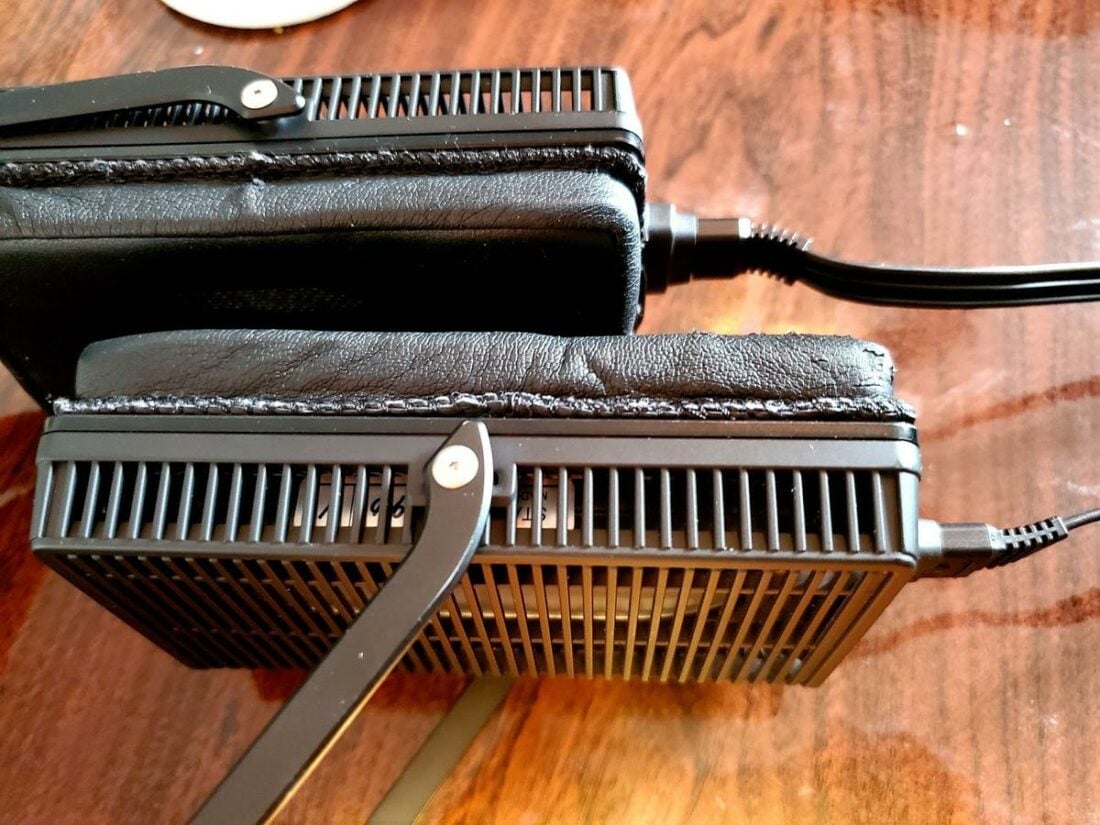
Relative to other Lambdas, the SR-L700 are warm in the midrange. Above the 1.5 kHz peak, the frequency response falls off relatively quickly, and the upper midrange and lower-to-mid treble are relatively subdued.
They are not quite as warm as the SR-007, but they are certainly warmer than most previous generations of Lambda, and the SR-L300 and SR-L500.
The SR-L700 MK2 have a very slightly dipped lower midrange, a big peak at 1.5 kHz, and a relatively recessed upper midrange.
Although it may appear weird, this frequency response is pretty typical of electrostatic headphones. Surprisingly, they don’t sound so bad. Once you get used to the midrange coloration, acoustic recordings sound natural as long as the instruments aren’t playing fundamentals in the region of the 1.5 kHz peak.
The peak lends some vocals and instruments a nasal quality and can cause pianos to sound irritatingly glassy. These are not the only examples of things sounding out of whack – the whole sonic picture also feels slightly “washed-out” due to the frequency response.
The most egregiously affected track was Iambic 5 Poetry by Squarepusher; the glockenspiel melody that comes in at around 2 minutes was outrageously boosted, with the upper frequencies of the instrument equivalently suppressed, so that it almost sounded like a sine wave.
Most tracks will not sound quite so off with the SR-L700. In fact, I like the midrange tuning quite a bit. It has a soft, romantic sound similar to the tuning of the SR-007, although the SR-L700 is less even-keeled. Not objectively neutral, but subjectively beautiful.
Midrange resolution is right up there with the best, although still not to the level of the round Staxes (SR-007, SR-009, etc.).
Some folks who mistake brightness for resolution have claimed that the SR-L300 offer “more detail” than the SR-L700. This is just not true. The SR-L300 are far less resolving than the Stax Lambda Pro, and to my ears, the Lambda Pro are slightly less resolving than the SR-L700.
Treble
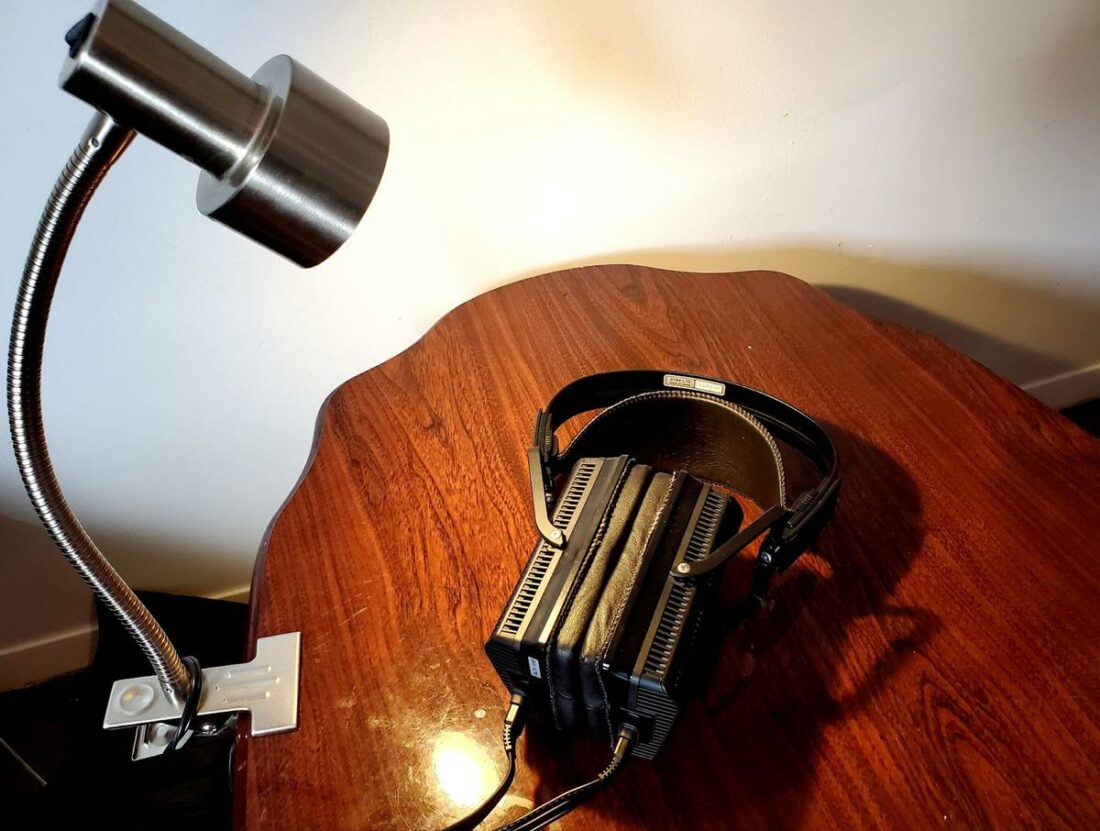
Treble may well be the area of greatest improvement for the SR-L700. After spending a few years with the Lambda Pro, the treble of the SR-L700 is much smoother and freer of aberrations than the Lambda Pro treble.
This is part of the “new-school” Stax approach of the 2010s. Older Stax models, like the Lambda Pro, and even the SR-007 Mk1, tended to emphasize the air frequencies almost to the degree of self-parody, with a big peak thrown in at 10 kHz for good measure.
This makes orchestral recordings sound awesome, with every stray cough perfectly audible. But for a lot of music – let’s face it – this sounds terrible, with cymbals given a plasticky sheen.
The latest models from Stax have been much more reasonable with treble tuning. The overall shape is the same: soft, withdrawn lower treble (~5 kHz through 9 kHz), with a rise into the air frequencies at around 10 kHz.
But with the SR-L700, this is done tastefully, resulting in a much more natural-sounding treble. The old Stax treble sounded somewhat bristly and grainy, but the SR-L700 treble is so smooth and resolving that it sounds uncanny.
I would take the treble of the SR-L700 over the treble of just about any pair of headphones I’ve ever heard, including higher-end Stax models.
The extension is perfect, and every little reverb tail and room noise is audible without being artificially boosted. Cymbals sound incredible with these headphones.
On the other hand… okay, the treble on these headphones sometimes can still sound a bit thin. Perhaps in an ideal world, they would have slightly more mid-treble. But I’m not pressed about it: they still have my favorite treble of any pair of headphones I’ve heard, period.
Technicalities
Where does this put the SR-L700 relative to the rest of the market when it comes to midrange resolution? Right up there with the best. (They out-resolve the ZMF Caldera, for example.)
Pound-for-pound, they are the most resolving headphones available for under USD $2000.
In practice, what this sounds like is that details are effortlessly separated from each other. This supports a very analytical mode of listening, my favorite mode of listening to music. On the other hand, as I’ve said, they’re slightly lacking in dynamics. Part of this is likely due to the dipped lower midrange, though.
Soundstage
The stage is narrower than some dynamic headphones, like the Sennheiser HD800S. Still, it is very airy, with a lot of “breathing room” – nothing ever sounds claustrophobic on the SR-L700 (even, I might say, when the music demands claustrophobic intensity).
The imaging of the SR-L700, while above average for the price bracket, is also not top-tier. The center image of the SR-L700 is somewhat vague, with a wide-open soundstage without well-defined edges. This leads to a very open, expansive sound, but sounds are not exactly precisely placed within the stereo field, with some smearing going on.
Instrument separation is very nearly top-tier, but here the Lambda Pro edge out the SR-L700 ever-so-slightly. I suspect this is primarily due to the slightly brighter and airier tuning of the Lambda Pro.
Comparisons
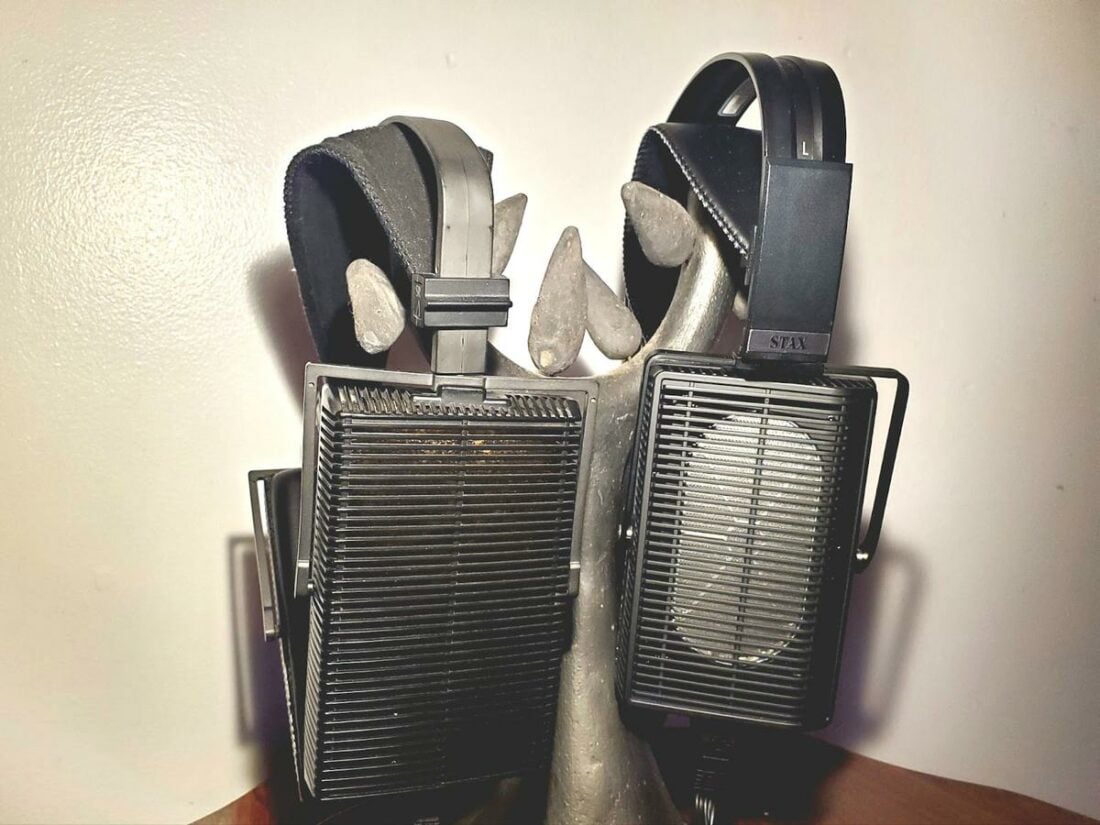
Stax SR-007
Compared to the slightly more expensive SR-007, we start to see some flaws. The SR-007 reveal information that the SR-L700. The SR-L700 are more forgiving of bad recordings.
The SR-007’s imaging and soundstaging capabilities are unmatched by any pair of headphones I’ve tried before or since, but the soundstage is not exactly expansive. Instead, it allows the listener to place instruments and sounds within a finite space precisely.
In comparison, the SR-L700 offer a sound that is less precise but more “epic.”
The soundstage of the SR-L700 is wider, with no finite borders; instead, sound retreats into the far distance (well, not that far – a couple of inches from the head at maximum).
Stax SR-Lambda Pro
Compared to the older Stax Lambda Pro, the SR-L700 offers slightly wetter and softer transients. The Lambda Pro are a drier-sounding pair of headphones with somewhat more tonal solidity and tighter bass than the SR-L700.
Which are more resolving? I’m tempted to give the Lambda Pro the win for midrange resolution by a small margin, as their drier transients and less suppressed upper midrange make low-level detail more immediately accessible. In contrast, the SR-L700 sound slightly smoother. The Lambda Pro offer slightly superior instrument separation due to the greater perception of detail in the midrange.
But I prefer the SR-L700 treble, as the Lambda Pros’ treble sounds subjectively grainier and hasher to me. The SR-L700 dynamic ability lends liveliness to the sound, and overall, they are more fun to listen to – I found myself picking them up more often for this reason.
ES Lab ES-1a
The ES Lab ES-1a are one of the SR-L700 MK2’s closest-priced competitors and are easily one of the most capable pairs of electrostatic headphones on the market. they perform quite well versus the SR-L700.
The ES Lab ES-1a have a drier, brighter sound reminiscent of the SR-009, with more incisive transients and less decay than the SR-L700. They also offer greater resolution over the L700, but the quick decay may make them sound slightly less natural.
The bass response of the ES-1a is far superior to the SR-L700. It is better extended, harder-hitting, and more textured.
However, the wetter sound of the SR-L700 may make it the better option for some people who find the dry timbre of the ES-1a unacceptable. In any case, the ES-1a should be on any potential electrostat buyer’s radar. These don’t get enough publicity, especially given how great they are for the price!
Where to Buy
Conclusion
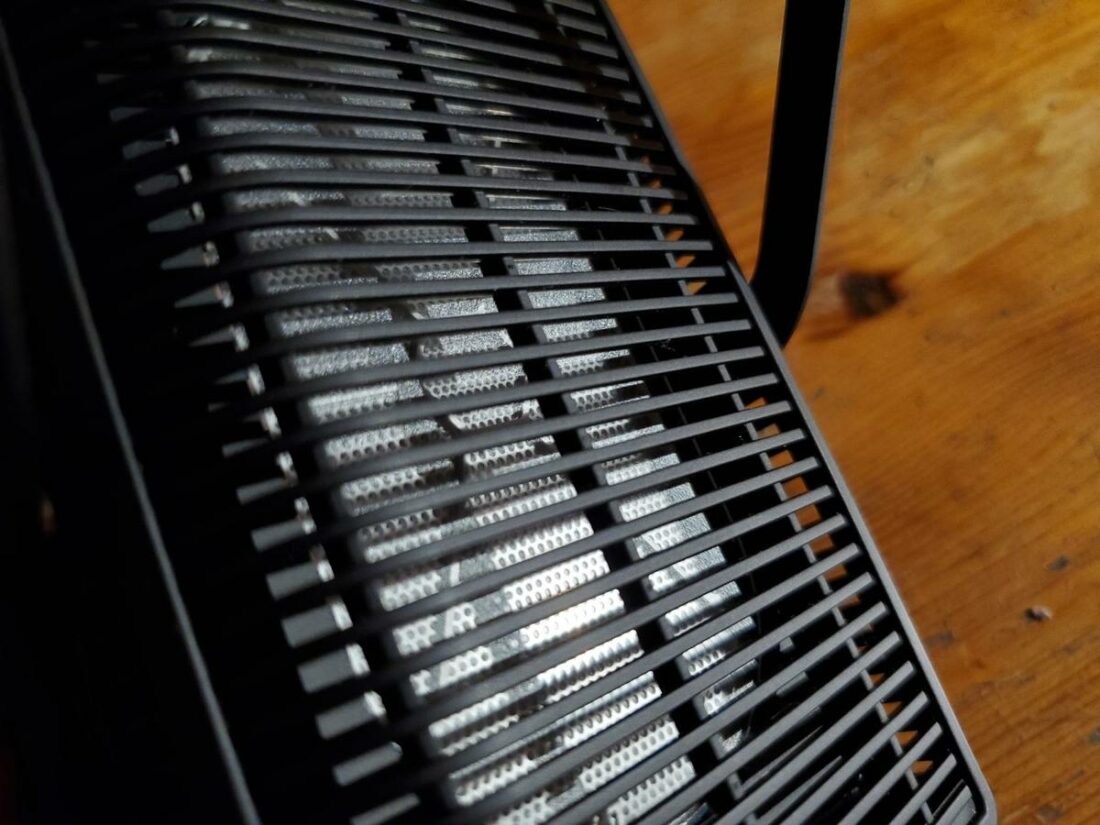
Anyone who’s been into audio for any time knows it’s a game of trade-offs. There’s no such thing as a “perfect” pair of headphones – what we try to decide as reviewers are whether the headphones we hear are making the right trades, according to us.
I bring this up because the SR-L700 are surely a flawed pair of headphones. Certain aspects of the sound, like dynamic ability, are entirely sacrificed for other aspects of the sound, like lack of distortion and instrument separation. This will tickle some people’s fancy, but it will not do for others.
The tonality is weird; the bass is lacking. For upwards of USD$1,500, this may seem unacceptable to some. However, considering what the SR-L700 do bring to the table, some (myself included) consider the trade-off worth it.
Overall, I like the SR-L700 a lot as a product. Although, perhaps they demonstrate the limits of the Lambda form factor: Stax have created a product that represents, to them, the best Lambda yet, and it still doesn’t hold a candle to the SR-007.
Still, the SR-L700 MK2 offer something that nothing else on the market does: a sound that marries a sense of warmth with the airiness of the Lambda series.
It’s a bit difficult to score a pair of headphones like the SR-L700. For headphones that emphasize clarity and detail resolution while retaining a somewhat natural sound, the SR-L700 are a success. The SR-L700 are among the best pairs of headphones in the USD$1k-2k market today, and I highly recommend them.
